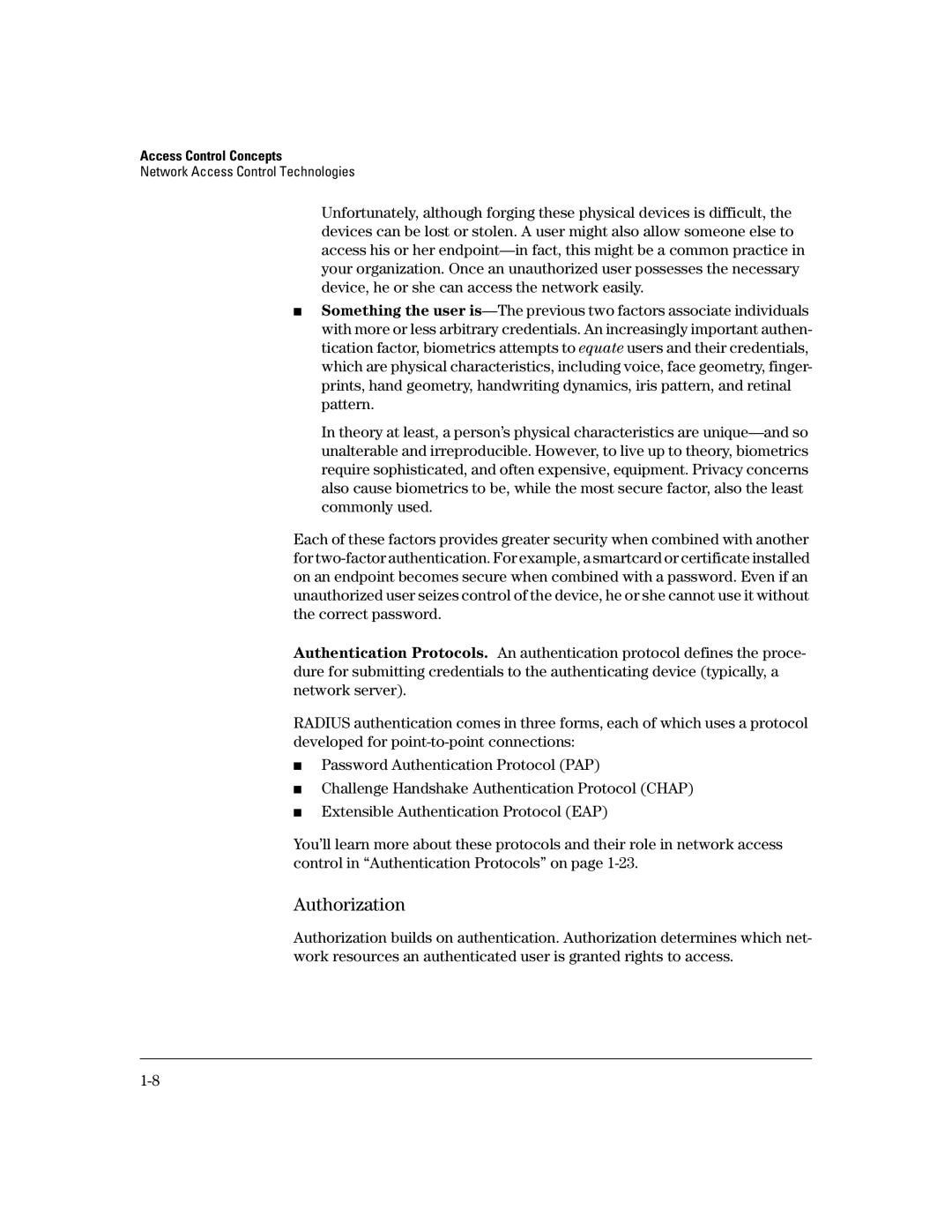Access Control Concepts
Network Access Control Technologies
Unfortunately, although forging these physical devices is difficult, the devices can be lost or stolen. A user might also allow someone else to access his or her
■Something the user
In theory at least, a person’s physical characteristics are
Each of these factors provides greater security when combined with another for
Authentication Protocols. An authentication protocol defines the proce- dure for submitting credentials to the authenticating device (typically, a network server).
RADIUS authentication comes in three forms, each of which uses a protocol developed for
■Password Authentication Protocol (PAP)
■Challenge Handshake Authentication Protocol (CHAP)
■Extensible Authentication Protocol (EAP)
You’ll learn more about these protocols and their role in network access control in “Authentication Protocols” on page
Authorization
Authorization builds on authentication. Authorization determines which net- work resources an authenticated user is granted rights to access.
